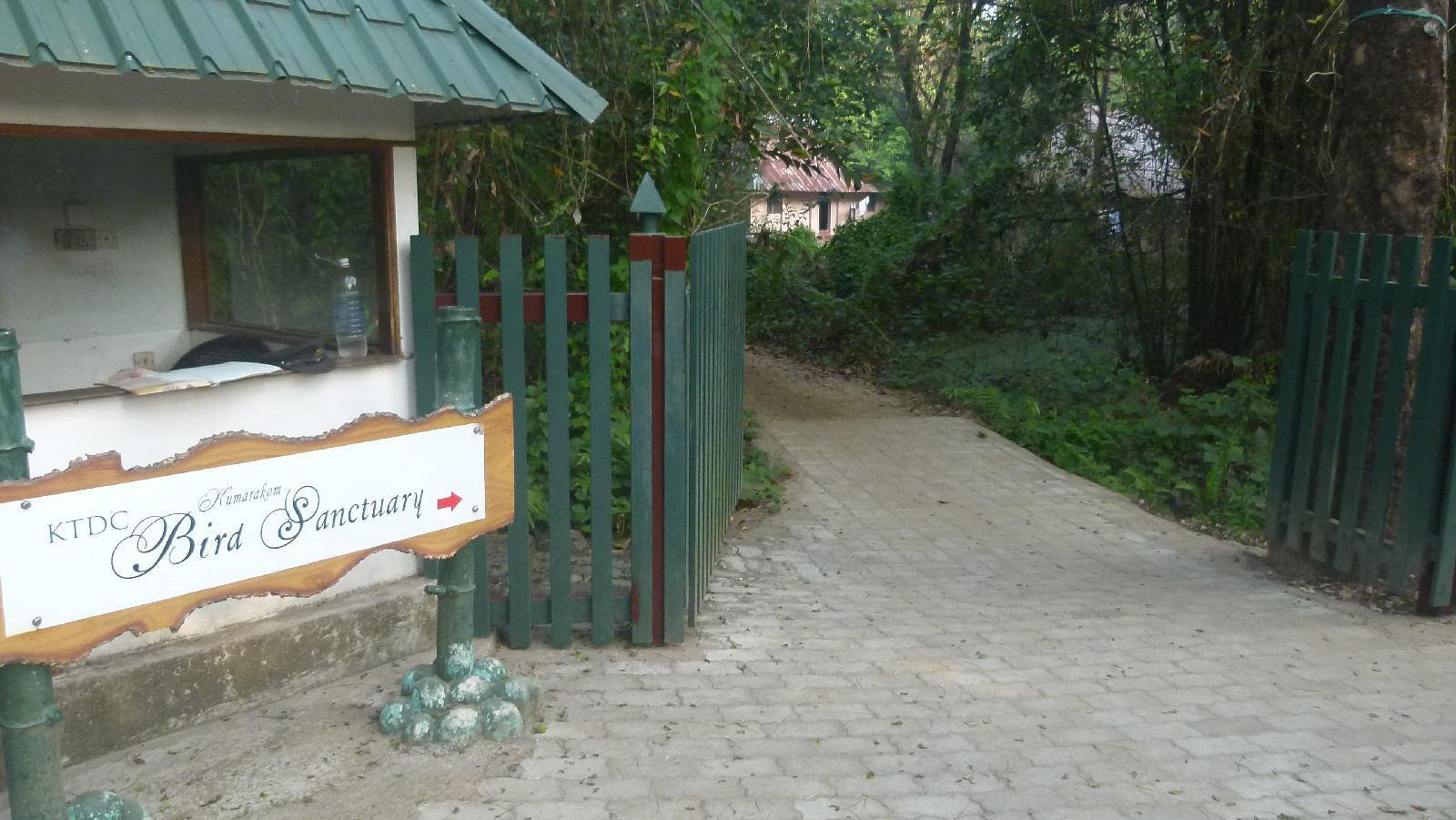If you’re a birdwatching enthusiast or simply someone who appreciates the tranquility of nature, Kumarakom Bird Sanctuary in Kerala is a must-visit destination. Nestled along the serene Vembanad Lake, Kumarakom offers a stunning array of avian species, lush greenery, and a peaceful environment that’s perfect for a relaxing escape from the hustle and bustle of city life. Whether you’re an experienced birdwatcher or a casual traveler looking for a quiet retreat, this sanctuary will captivate your senses.
In this blog post, I’ll take you on a journey through what to expect when visiting Kumarakom Bird Sanctuary, provide some helpful tips, and share everything you need to know about how to reach and explore the sanctuary.
Before we move forward, if you are looking to travel please book your hotels and flights through this link. You will get exclusive discounts & I will be able to earn a small commission that will help me keep this site up & running.
What to Expect at Kumarakom Bird Sanctuary
Kumarakom Bird Sanctuary, also known as Vembanad Bird Sanctuary, is located in the Kottayam district of Kerala. The sanctuary is spread over 14 acres of lush wetlands and provides a perfect environment for migratory and resident birds alike. It is one of the most famous bird sanctuaries in India and attracts nature lovers from all over the world.
As you step into the sanctuary, you’ll be greeted by a verdant landscape of swaying palm trees, tropical plants, and backwaters that create a truly enchanting setting. The air here is fresh, cool, and filled with the sounds of birds chirping in harmony. The sanctuary is home to a wide variety of bird species, including both migratory and resident birds. Some of the notable birds that you might encounter are:
- Kingfishers: Brilliantly colored and often seen near the water, their vibrant blue plumage adds a dash of color to the green surroundings.
- Herons: Elegant and graceful, you’ll spot various species of herons along the water’s edge, including the great white and grey heron.
- Cuckoos: Known for their unique calls, cuckoos are also common visitors to the sanctuary.
- Teals and Ducks: These waterfowl are often found floating serenely in the Vembanad Lake.
- Migratory Birds: Depending on the season, you can also spot migratory species such as Siberian cranes, wood sandpipers, and many more.
Apart from birds, the sanctuary is also rich in flora, which makes it a great spot for nature walks and photography. The wetland area, lined with dense vegetation, offers opportunities for spotting reptiles, amphibians, and even some small mammals.
How to Reach Kumarakom Bird Sanctuary
One of the best things about Kumarakom Bird Sanctuary is that it is easily accessible from major cities in Kerala. Here’s how you can reach it:
By Air:
The nearest airport to Kumarakom is the Cochin International Airport (COK), located about 85 kilometers away. The airport is well-connected with domestic and international flights, so it’s a convenient entry point to Kerala. From the airport, you can hire a taxi or use public transport to reach Kumarakom. The drive typically takes around two hours.
Alternatively, if you’re flying into Trivandrum International Airport (about 170 km away), you can take a train or bus to Kottayam and then a short taxi ride to Kumarakom.
By Train:
Kottayam is the nearest railway station, located just about 16 kilometers from the sanctuary. Kottayam has excellent rail connectivity with major cities like Kochi, Trivandrum, and other parts of Kerala. Once you reach Kottayam, you can hire a taxi or take a bus to reach the sanctuary.
By Road:
Kumarakom is well-connected by road, and you can drive from Kochi, Kottayam, or other nearby towns. If you’re coming from Kochi, the journey by car will take around 1.5 to 2 hours.
If you’re not driving yourself, private taxis or hired cabs are a convenient option. Kerala State Road Transport Corporation (KSRTC) buses also run regular services to Kumarakom from various towns.
Itinerary for a Day at Kumarakom Bird Sanctuary
A visit to Kumarakom Bird Sanctuary can be an immersive experience if you take your time and explore it fully. Here’s a suggested itinerary for a day trip:
Morning:
Start your day early to enjoy the sanctuary at its quietest and most serene. The morning hours are perfect for birdwatching, as many birds are most active during the early part of the day.
- 9:00 AM – Boat Ride on Vembanad Lake: Begin with a tranquil boat ride on Vembanad Lake, which offers beautiful views of the sanctuary. The boat rides are generally guided, and the boatmen are knowledgeable about the bird species and the ecosystem, so you can learn a lot while cruising. A boat ride will also give you the chance to spot various water birds and perhaps a few crocodiles basking in the sun.
- 10:30 AM – Walk Through the Sanctuary Trails: After your boat ride, you can explore the sanctuary on foot. There are well-marked walking trails that take you deeper into the wetlands. The forested areas are home to various birds and other wildlife. Bring along binoculars for a better view of the birds!
Afternoon:
- 12:00 PM – Bird Watching and Photography: Find a nice quiet spot to sit and enjoy the calm surroundings. The afternoon light is perfect for photography, so make sure you have your camera ready. Keep an eye out for birds and other wildlife while soaking in the peace and serenity of the place.
- 1:30 PM – Lunch at a Local Restaurant: Head to one of the nearby lakeside restaurants for a delicious Kerala-style lunch. Kerala’s cuisine is renowned for its freshness and flavors. A traditional fish curry with rice or a vegetarian meal like appam with stew will give you a true taste of the region.
Evening:
- 3:00 PM – Visit the Nearby Villages or Backwaters: After your lunch, you could take a brief stroll through the nearby villages or explore the backwaters by canoe. Kumarakom is also known for its beautiful houseboats, and if time allows, you can take a short ride to experience the backwaters from a different angle.
- 4:30 PM – Wind Down and Departure: If you have time before your journey back, spend a few moments by the lake, soaking in the view of the setting sun and the birds returning to their nests. It’s the perfect way to end a peaceful visit to the sanctuary.
Best Time to Visit Kumarakom Bird Sanctuary
The best time to visit the Kumarakom Bird Sanctuary depends largely on what kind of experience you’re seeking.
- Winter (November to February): This is the peak season for birdwatching, especially for those interested in migratory birds. During these months, you can witness a flurry of activity as numerous migratory species flock to the sanctuary. The weather is also cool and pleasant, which makes it ideal for outdoor activities like walking and boating.
- Monsoon (June to September): While the monsoon season makes the landscape lush and green, it’s not the best time for birdwatching. Many birds migrate during the rainy season, and the heavy rains can make some parts of the sanctuary difficult to access. However, if you prefer fewer crowds and the beauty of Kerala’s monsoon season, this could be a good time to visit.
- Summer (March to May): The weather can get quite hot during the summer months, but if you’re not deterred by the heat, it’s still a good time to visit, especially for birdwatchers keen on spotting resident birds. Be prepared for the warmth and bring plenty of water, sunscreen, and a hat.
Tips for Visiting Kumarakom Bird Sanctuary
- Carry Binoculars and a Camera: The sanctuary is a paradise for birdwatchers and photographers, so don’t forget your binoculars and a good camera. A telephoto lens will help you capture distant birds without disturbing them.
- Wear Comfortable Footwear: The walking trails can be a bit muddy, especially after the rains, so comfortable shoes are a must. You’ll also want sturdy footwear for the boat ride and any hiking through the sanctuary.
- Be Quiet and Respectful of Nature: The birds are sensitive to noise, so maintain a quiet demeanor and avoid loud talking. This will not only help you spot more birds but will also contribute to preserving the peace of the sanctuary.
- Bring Insect Repellent: If you’re visiting during the warmer months, insects like mosquitoes may be present, especially in the wetland areas. Pack some insect repellent for comfort.
- Plan for a Relaxed Visit: Don’t rush your visit. The beauty of Kumarakom lies in its slow pace, and you’ll want to take your time soaking in the natural beauty.
Conclusion
Kumarakom Bird Sanctuary is an idyllic retreat for nature lovers and a must-visit for birdwatchers. From the lush landscape to the diverse birdlife and tranquil boat rides on Vembanad Lake, this sanctuary offers an unforgettable experience. Whether you’re visiting for a day or a weekend, it’s the perfect place to connect with nature, unwind, and witness the beauty of Kerala’s wildlife.
Plan your visit during the cooler months for the best birdwatching experience and don’t forget to pack light, comfortable clothing and equipment to make the most of your trip. With its peaceful environment and vibrant wildlife, Kumarakom Bird Sanctuary promises an enriching experience for all who visit.
My Other Posts
If you are looking for options in Kashmir, check out my posts on Pahalgam, Gulmarg, Snowfall in Kashmir, and Best Time to Visit Kashmir. If you are looking for options in Ladakh, check out Ladakh Weather, Nubra Valley, 5 Days Kashmir Itinerary, Best Packing tips for Ladakh & best tourist places in Ladakh.
If you are looking for something in Sikkim, check Tsomgo Lake, Nathu La Pass, Baba Harbhajan Singh Mandir and Batasia Loop. If you are looking for some jungle safari read Gir Safari, or Bandipur Safari, feel blessed at Sri Venugopala Swamy Temple in Mysore.
If you are looking for places to visit in the Andaman Islands, please check my posts on Radhanagar Beach & Ross Island.
If you are looking for other options, check my posts on Murud Janjira, Kashid, Pirwadi Beach and Kihim Beach in Maharashtra or Malshej Ghat, Matheran Resorts, Kailash Temple Ellora, Vandri Lake, Kelwa Beach in Palghar & Mahabaleshwar.
Alternatively, if you are interested in some Religious tourism, please check my posts on Golden Temple, Kamakhya, Trimbakeshwar, Somnath Temple, Kalighat Temple, Dakshineswar Temple and Kashi Vishwanath. If you are looking for North East Adventure tours, check my posts on Shillong, Meghalaya, Dawki, Double Decker Living Root Trek, and 7-Day North East Itinerary

